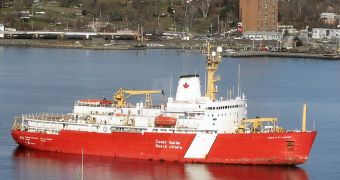Understanding how the carbon cycle operates in the Arctic is an essential condition for refining climate models on which predictions of the future climate are based. Back in 2008, scientists conducted a survey of carbon concentrations in Arctic waters, and they've now just released their results.
In a paper appearing in the latest issue of the esteemed journal Biogeosciences, experts at the Woods Hole Oceanographic Institution (WHOI) explain how they measured carbon levels at various sites and depths in the Arctic Ocean, and how these data were centralized in new databases.
A local carbon cycle is made up of the pathways the chemical takes in entering an ecosystem, and the effects it causes. Researchers are particularly interested in how CO2 concentrations change in the Arctic over time, since the substance is one of the most important greenhouse gases.
The areas around Earth's poles are the most severely affected by global warming. While average, global temperatures rise by just fractions of a degree, temperatures at the poles spike by several degrees, on account of the uneven influence that climate change exerts.
WHOI investigators conducted their Arctic survey in 2008, aboard the Canadian Coast Guard icebreaker Louis S. St. Laurent. They focused their efforts at two locations in the Canada Basin, collecting samples from as many as 24 depth levels.
The deepest sample they collected was harvested from 3,800 meters (12,500 feet) below the surface. “Carbon is the currency of life,” explains WHOI scientist and lead study author, David Griffith.
“Where carbon is coming from, which organisms are using it, how they're giving off carbon themselves – these things say a lot about how an ocean ecosystem works. If warming temperatures perturb the Arctic Ocean, the way that carbon cycles through that system may change,” he goes on to say.
According to the expert, the Arctic Ocean has multiple layers of water stacked atop each other, each of which displays a unique concentration of carbon. Studying how these layers interact is essential for deciphering the local carbon cycle.
“We don't yet have the kind of data to say anything definitive about how the Arctic would be affected by warming climate – but what we do have is a very important baseline of data to help evaluate changes that will happen in the future,” Griffith explains.
“Without that, you‘re unfortunately just guessing at how things change over time,” he concludes, quoted by Astrobiology Magazine.

 14 DAY TRIAL //
14 DAY TRIAL //